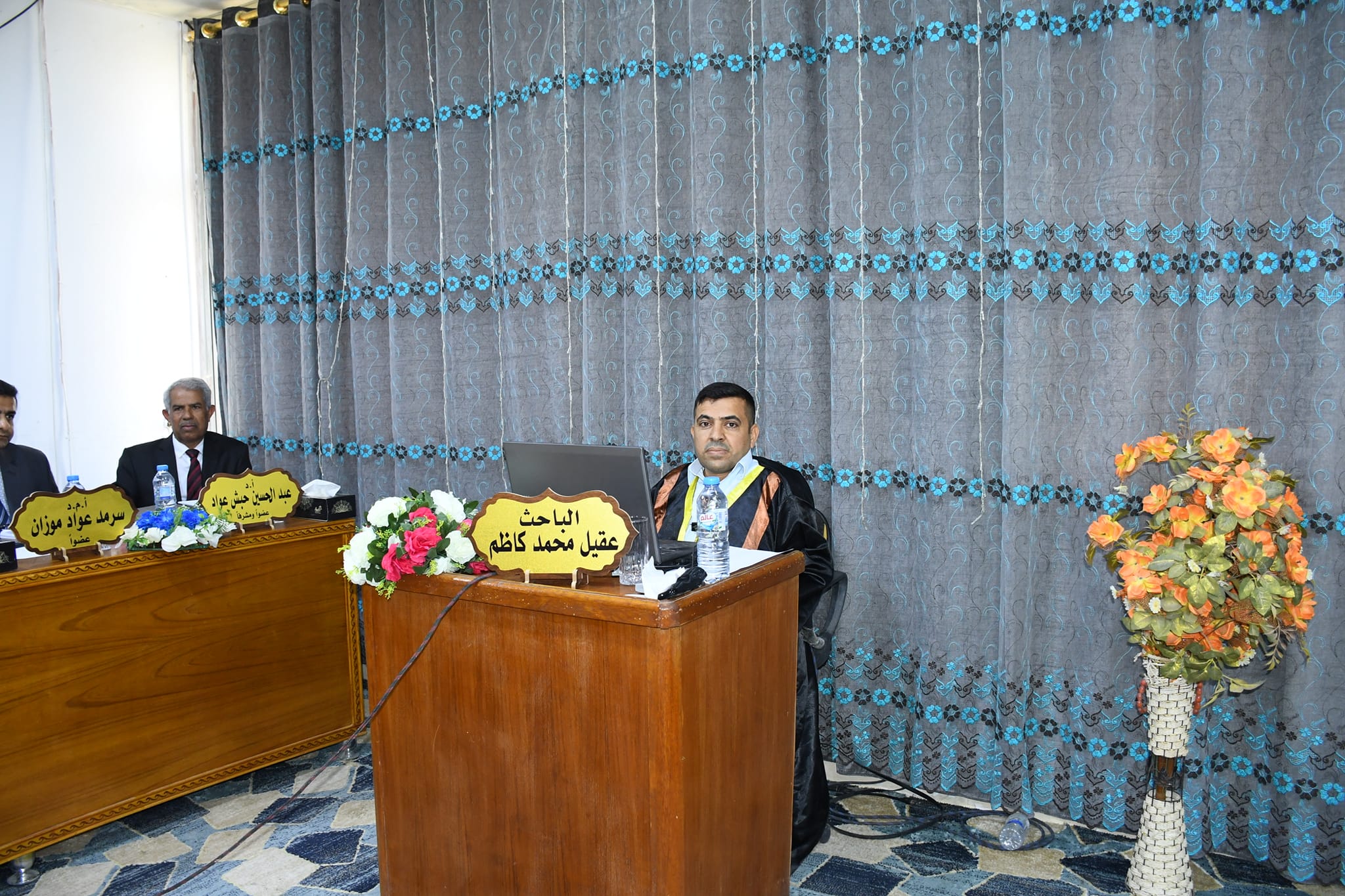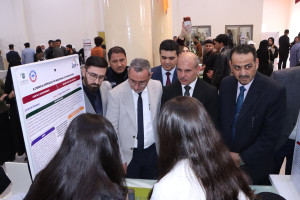
The College of Education for Pure Sciences discussed a doctoral thesis on a biological and molecular study of the cryptosproridium parasite in sheep and goats in the province of Babylon
The thesis presented by the researcher (Aqil Muhammad Kazem Al-Moussawi) included the summary
The samples of the current study (sheep and goat feces) for the study of the biological and molecular aspects were collected
of Cryptosporidium from four regions in Babylon Governorate (Al-Hamma Center -
Hashemite district - Mahaweel district - Musayyib district) with 180 samples of fresh faeces for sheep and 180
A sample of fresh feces for goats during the period from January 2020 to October 2020.
This study included two parts of the first part, in which the traditional methods (floating and dyeing) were used.
Using modified ziehl-neelsen stain and light microscopy for the purpose of identifying the shape of
The parasite and its dimensions. The quantitative infestation rate in sheep is 45.55% and goats 33.88%, with a significant difference.
(P<0.05). The infection rates in sheep according to the studied areas in Al-Musayyib district were 41.46%.
In Al-Mahaweel district 43.90%, Al-Hashmiyah district 50.00%, and Al-Hamma district it was 46.00%
Significant differences were recorded between regions, while the infection rates were in goats according to the studied regions
In the Musayyib district 37.50%, in the Mahaweel district 33.33%, in the Hashemite district 30.18%, and in Markaz
Nevus 35.41% and no significant differences.
Regarding the infection rate by sex, no significant differences were recorded for the infection rates in both sheep and goats
It was in sheep (42.00% in males and 46.92% in females), while it was 31.11% in goats.
Males and females 34.81%.








